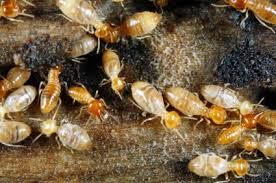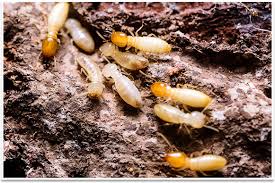Termite Control Specialists Fundamentals Explained
This page describes the three types of also the termite species which are located in infestations around Australia, subterranean, drywood and dampwood, and also termite.
Termites are categorized into three ecological categories according to their nesting and feeding habits: subterranean, drywood and dampwood.
Subterranean termites are the most common type of termite that infests wood and are one of the most destructive pests. Outdoors wood is mainly infested by them in contact with the soil, such as trees, stumps and branches. They prefer although they can digest wood, wood that has some amount of rot which makes it a lot easier for them to digest it. .
Termite Control Services In Adelaide Can Be Fun For Anyone
Subterranean termites will need to be near a source of moisture to live, where they can obtain moisture in the 30, which makes their nests in or close to the ground. They tunnel through dirt to access wood or soil and that they tunnel to achieve moisture. .
Soil is used by the termites for a material to build nests and shelter tubes, which can be composed of faeces, wood, dirt and saliva. Some species construct carton nests above ground and construct shield tubes (also called mud tubes) to connect the nest to the soil.
Foraging is dependent on the weather, with activity in summer and activity in conditions or winter after rain. In regions they can forage throughout the year, with peaks during warmer weather conditions.
6 Simple Techniques For Termite Control Review
Termites reside inside pieces of timber, wholly in small colonies, usually less than 1000 individuals. There might be tiny colonies like a piece of furniture inside one piece of timber or object. So the galleries don't follow the grain of wood as is typical termites rings can be fed across by them, however they are inclined to steer clear of heartwood.

Colonies can grow for many years undetected until even the termites swarm or the wood breaks. The winged alates, which would be might not be made for years in a new colony until the population reaches a vital point. They then leave the nest to pair up and discover a website to mate and start a new colony, generally not far from the parent colony. .
Wood that remains moist see page due to contact with the soil or, for example, through a water leak in a building is normally infested by dampwood termites. They are likely to infest timber that's outside, like a tree, stump or logs in contact.

Our Termite Control Review Diaries
Dampwood termites live wholly inside the timber that they feed on and create large galleries that are open. As with drywood termites, they may infest timber for many years before they are found, which is most likely when the alates swarm from a colony. Swarming may occur with species swarming at times, over several months.
They're an indication of a moisture issue, if they are found in a building. They are minor pests and can be controlled in buildings by taking away the supply of moisture. In trees that are live they tend to feed on dead and rotting wood.
Termite species can be difficult to identify, even to the experts. Identification is usually based on the soldiers, that's the termite caste which has the features that were most distinguishable.
Of the species it is.
Getting My Termite Control Specialists To Work
The mind of the soldier is rectangular pear-shaped and yellow with darker, smooth thin mandibles. Body is left up to 7 mm long. It's easily confused with two other native Coptotermes species, C. frenchi and C. lacteus (Victoria Museum)
The soldiers produce a white sticky liquid out of a opening (fontanelle) on front of mind when protecting the nest from assault.
Mounds are not typically built by coptotermes species, except in Queensland and other tropical areas of Australia. They mostly nests in trees, poles, stumps, buried timber under buildings spaces, around houses and in walls. Trees for nesting are English oaks, various eucalypts and peppercorns. The colony is found at the lower portion of their trunk or the root crown.
Some Known Questions About Termite Control Specialists.
Although Mastotermes darwiniensis is the destructive locally across its restricted range in tropical northern Australia, coptotermes acinaciformis have become the most destructive termite species in Australia overall. C. acinaciformis attacks all lumber structures and damages forest and ornamental trees in addition to fruit trees.